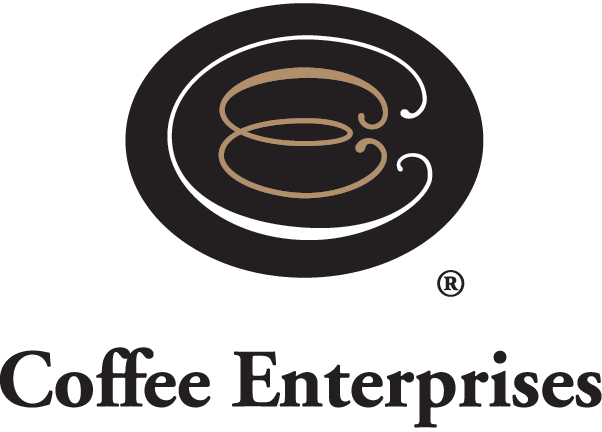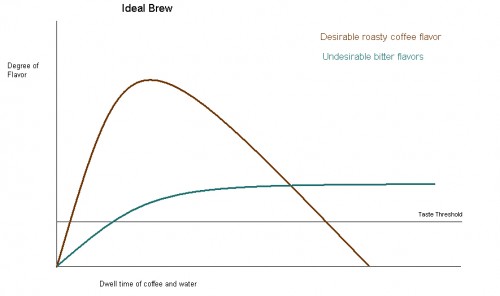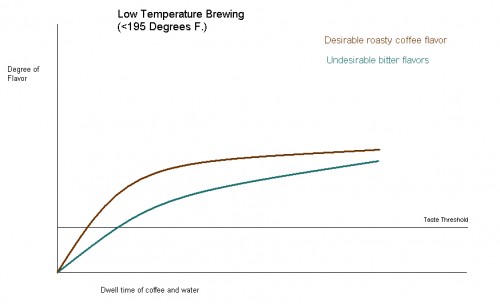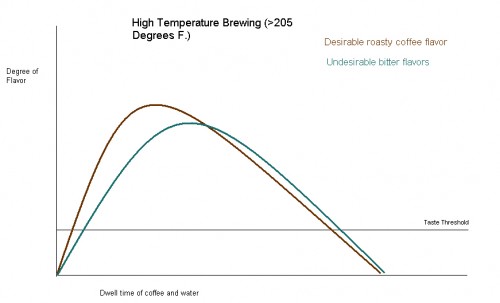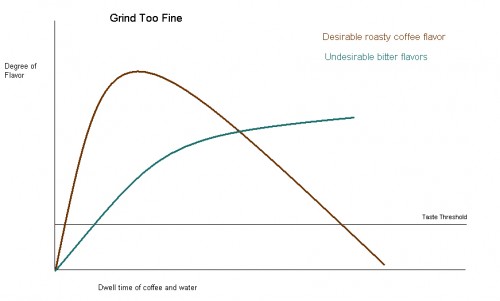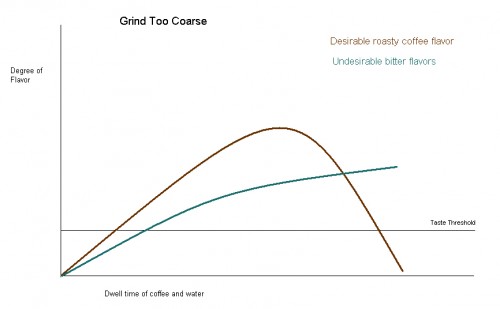Optimal Coffee Brewing Explained
When coffee is brewed correctly, there is truly nothing like it. You do a double-take, look incredulously at the cup in your hand and say, “man … that’s GOOD.”
But in order for the coffee to come out just right, the correct brew parameters must be in place: water quality, water-to-coffee ratio, water temperature, and grind. When brewed correctly, the coffee’s best flavors are released quickly, and bitterness will be present, but it will be perceived as more of an aftertaste or “finish.” Cutting off the extraction at a certain point can control the amount of bitterness.
However, when coffee is brewed poorly, you can be left with a weak or bitter or *gulp* weak AND bitter cup of coffee.
Water Not Hot Enough
If the water is less than 190º F., the best flavors are not extracted, but the more soluble bitter flavors will be. The product will taste weak and bitter.
Water Too Hot
If the water is above 205ºF, all soluble material, including less desirable material, is quickly extracted, resulting in a strong bitter cup.
Coffee Grind Too Fine
When the coffee is ground too fine (particle sizes too small), the best flavor is quickly extracted. More of the bitter flavors will also emerge after the better flavors have been washed out.
Grind Too Coarse
When the coffee is ground too coarse (particle sizes too large), the brewing process proceeds slowly. The best flavors are not dominant and the cup will taste weak and somewhat bitter or astringent.
